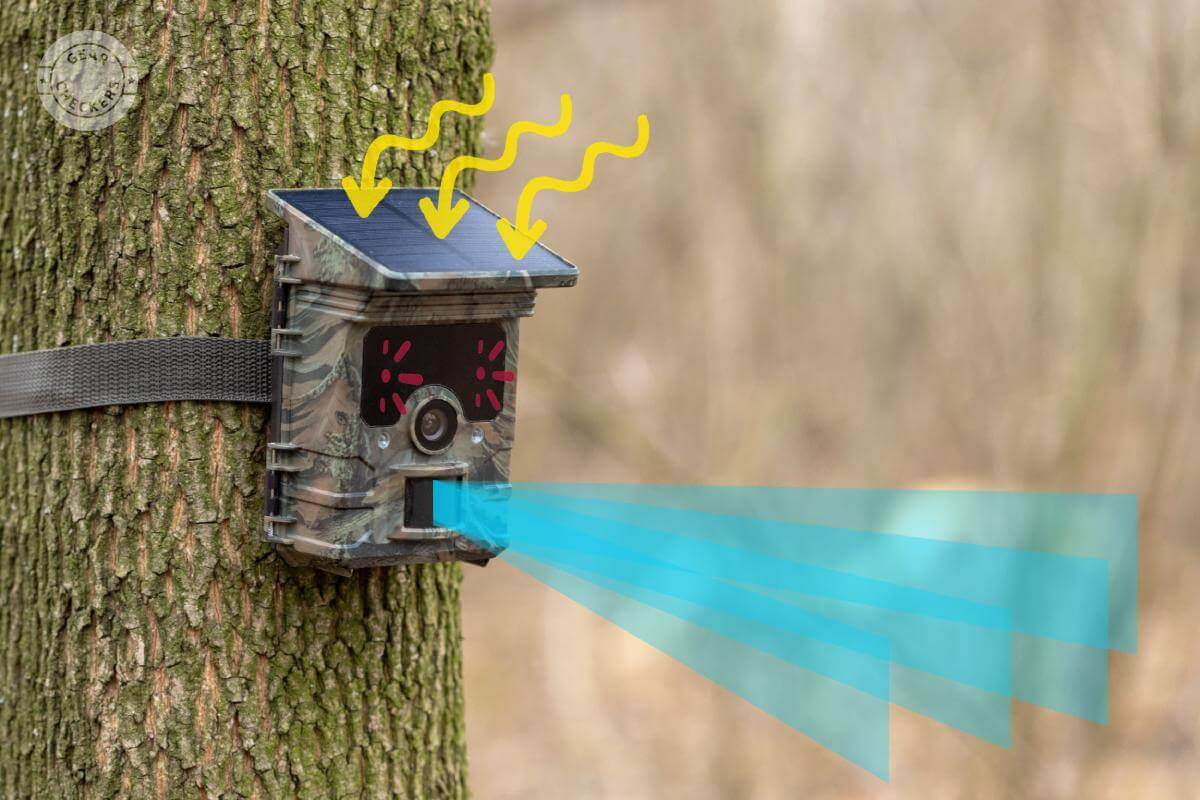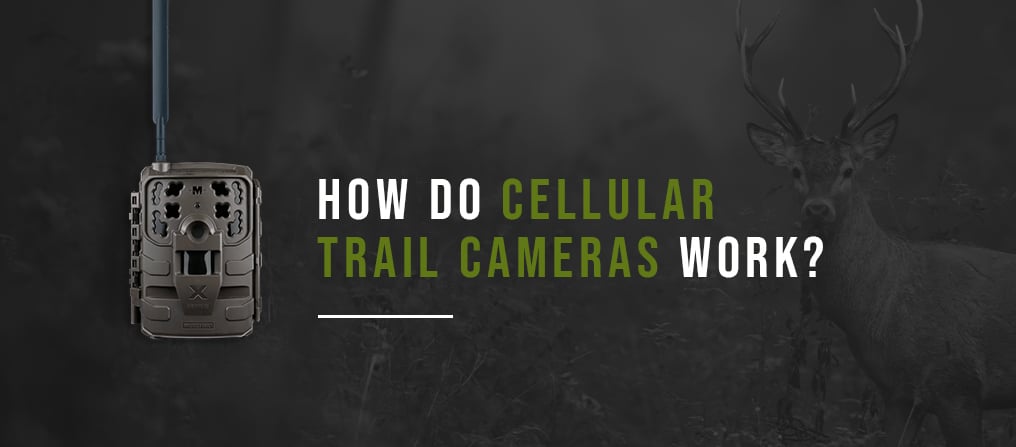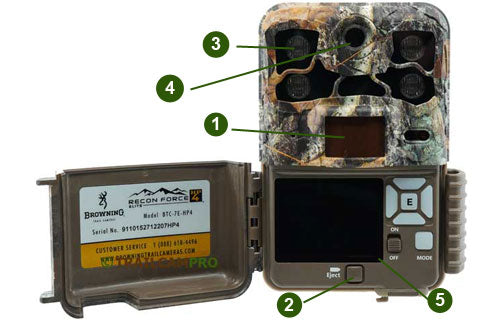Trail cameras work by using motion sensors to detect movement, triggering the camera to take photographs or videos of the surroundings. Trail cameras, also known as game cameras or wildlife cameras, are designed to capture images or videos of animals in their natural habitat.
These cameras are equipped with motion sensors that activate the camera when there is movement in its field of view. Once triggered, the camera snaps a photo or records a video, allowing wildlife enthusiasts, hunters, or researchers to monitor and study animal behavior without disturbing them.
Additionally, trail cameras are useful for home security, surveilling remote areas, or simply capturing moments of wildlife in nature. Understanding how trail cameras work can enhance your outdoor experiences and provide valuable insights into the world of wildlife.

Credit: www.gearcheckers.com
Components Of A Trail Camera
Trail cameras are an essential tool for wildlife enthusiasts and hunters alike. These cameras allow you to capture high-quality images and videos of animals in their natural habitat without disturbing them. To understand how trail cameras work, let’s delve into their key components.
Camera
The camera is the heart of a trail camera. It captures images or records videos when triggered by motion or heat. Most trail cameras are equipped with high-resolution sensors that ensure sharp and clear images even in low-light conditions. With advanced features like burst mode or time-lapse photography, trail cameras offer versatility to capture every moment.
Motion Sensor
The motion sensor acts as the eyes of a trail camera. It detects any movement within its range and triggers the camera to capture images or start recording. The sensitivity and range of the motion sensor can be adjusted to suit your specific needs. This feature ensures that you never miss any action, as the camera only activates when there is movement.
Infrared Illuminators
Infrared illuminators are crucial for capturing images or videos in low-light or nighttime conditions. These illuminators emit infrared light that is invisible to the human eye but can be detected by the camera’s sensor. As a result, the trail camera can capture detailed images or videos even in complete darkness without disturbing the animals. Many trail cameras offer adjustable infrared settings to optimize the quality of night-time footage.
Sd Card
The SD card is the storage medium of a trail camera. It is where all the captured images and videos are saved. With the increasing resolution and file sizes of modern trail cameras, it’s essential to use high-capacity SD cards to ensure ample storage space. Using a high-speed SD card also allows for faster data transfer and ensures that you won’t miss any critical shots due to slow write speeds.
Understanding the components of a trail camera provides insight into how these devices work seamlessly to capture stunning images and videos of wildlife. Whether you’re a nature lover or a hunting enthusiast, trail cameras allow you to observe and document the wonders of the natural world with minimal interference. By combining a high-quality camera, motion sensor, infrared illuminators, and a reliable SD card, trail cameras provide an invaluable tool for capturing and preserving nature’s beauty.
How Trail Cameras Capture Images
Trail cameras capture images through a combination of motion detection, trigger speed, and burst mode features. Understanding how these components work together provides insight into the effectiveness of trail cameras in capturing wildlife and outdoor activities.
Motion Detection
Motion detection is a critical component of trail cameras. These cameras are equipped with sensors that are sensitive to movement. When the sensor detects any motion within its range, it triggers the camera to capture an image or video. This feature ensures that the camera only records when there is activity, conserving battery life and storage space.
Trigger Speed
The trigger speed of a trail camera determines how quickly it can capture an image once motion is detected. Cameras with fast trigger speeds are more likely to capture fast-moving wildlife or objects without delay. A shorter trigger speed results in less lag time, ensuring that crucial moments are not missed when monitoring a specific area.
Burst Mode
Trail cameras are often equipped with a burst mode feature, allowing them to capture multiple images in quick succession after detecting motion. This mode is beneficial for capturing fast-paced wildlife or subtle movements that could be missed with a single image. The ability to take multiple shots in rapid succession increases the likelihood of capturing the perfect image or sequence of events.
Different Types Of Trail Cameras
Trail cameras come in various types, each offering unique features tailored to different hunting and monitoring needs.
Basic Trail Cameras
Basic trail cameras, also known as traditional trail cameras, are entry-level devices that capture still images or videos when triggered by motion or heat signatures.
Wireless Trail Cameras
Wireless trail cameras utilize a Wi-Fi connection to instantly transfer the captured images or videos to a designated device or cloud storage for remote viewing.
Cellular Trail Cameras
Cellular trail cameras operate through cellular networks to send images or videos directly to your smartphone or email, offering real-time monitoring of wildlife activities.

Credit: www.wildcare.co.uk
Choosing The Right Trail Camera
When selecting a trail camera, consider crucial factors like image quality, battery life, memory capacity, and detection range.
Image Quality
High-resolution images are essential for clear, detailed photos capturing wildlife activity accurately.
Battery Life
Opt for trail cameras with extended battery life to ensure uninterrupted surveillance in remote locations.
Memory Capacity
Choose a camera with ample storage space to save a large volume of images and videos without frequent erasing.
Detection Range
Select a camera with a wide detection range to cover a broader area and capture more wildlife movements.
Tips For Using Trail Cameras
Using trail cameras effectively can significantly enhance the success of your wildlife scouting and field surveillance. These cameras are essential tools for capturing wildlife activity, monitoring game trails, and conducting research. By following the tips for using trail cameras, you can ensure that you maximize their potential. The proper placement, adjusting settings, and regular maintenance are key aspects to consider.
Proper Placement
When placing trail cameras, it’s important to consider the specific wildlife behavior and movement patterns you intend to capture. Ensure that the cameras are strategically placed at a height and angle that provides a clear view of the target area. Take advantage of natural features, such as trees or rocks, to conceal the camera’s presence and minimize the likelihood of detection by wildlife.
Adjusting Settings
Familiarize yourself with the camera’s settings to optimize its performance. Adjust the resolution, trigger speed, and sensitivity based on the target wildlife and environmental conditions. Fine-tuning these settings can significantly impact the quality of the captured images and the camera’s overall effectiveness.
Maintenance
Regular maintenance is crucial to ensuring the functionality and longevity of trail cameras. Check the battery levels, clean the lens, and clear any debris that may obstruct the camera’s view. Additionally, conduct periodic checks to ensure that the cameras remain securely fastened and are in good working condition.

Credit: www.moultriemobile.com
Conclusion
In the great outdoors, trail cameras provide a vital link to understanding wildlife behavior. By capturing images and videos, these cameras offer a unique perspective on the natural world. With their advanced technology, trail cameras continue to evolve, making them an essential tool for wildlife enthusiasts and researchers alike.
Their impact on conservation efforts cannot be overstated.


0 comments